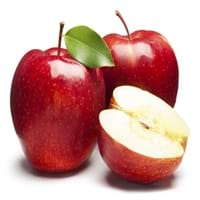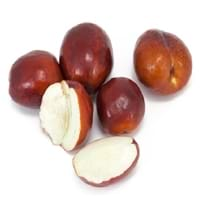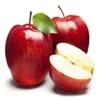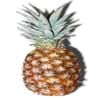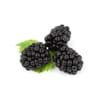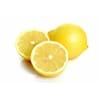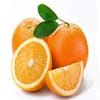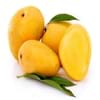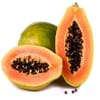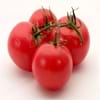Health Benefits
Cancer prevention, Supports healthy Liver function, Diarrhea treatment, Heart care, Increases metabolic rate, Neutralizes irritable bowel syndrome, Helps Prevent cataract, Prevents constipation, Prevents gall stones, Prevents high blood pressure, Helps prevent Parkinson's disease, Reduces risk of asthma, Treatment of alzheimer's disease
Cancer prevention, Diarrhea treatment, Improves muscular strength, Liver health, Maintains hormonal balance, Reduces nervous tension, Reduces blood circulation problems, Reduces stress, Regulation of heart rate, Treatment of hysteria
General Benefits
Boosts immune system, Helps in weight loss, Maintains healthy cholesterol level, Whitens teeth
Anti oxidant properties, Digestive aid, Flu treatment, Helps in weight loss, Strengthens bones, Treatment of common cold
Skin Benefits
Anti-aging benefits, Brightens and lightens complexion, Hydrates skin, Treatment of acne, Treatment of dark spots, Treatment of puffy eyes
Heals sunburn, Hydrates skin, Reduces wrinkles, Skin rejuvenation, Skin revitalization
Hair Benefits
Prevents hair loss, Promotes longer and healthier hair, Regulates hair growth, Treatment of dandruff
Promotes longer and healthier hair, Protects hair
Allergy Symptoms
Abdominal pains, Itching, Swelling of mouth, tongue or lips, Vomiting
Abdominal pains, Breathing difficulty, Diarrhea, Hives, Itching in eyes, Itching of nose, Nasal congestion, Redness of eyes, Runny nose, Sneezing, Wheezing
Side Effects
Allergic reaction, May consist of poisonous seeds
Decrease in blood sugar levels, Intense headache
Lactating Women
Yes
Not Available
Best Time to Eat
Any time except an hour after meal, Best if taken as a breakfast (or empty stomach), Don't consume at night and before bed
As a snack in the late afternoon, Don't consume at night and before bed, Morning time (before lunch), Strictly avoid empty stomach
Vitamin B5 (Pantothenic Acid)
Not Available
Vitamin B9 (Folic acid)
Not Available
Vitamin C (Ascorbic Acid)
Vitamin E (Tocopherole)
Not Available
Vitamin K (Phyllochinone)
Not Available
Lutein+Zeaxanthin
Not Available
Phytosterol
Not Available
Calories in Fresh Fruit with Peel
Calories in Fresh Fruit without Peel
Not Available
Calories in Frozen Form
Not Available
Calories in Canned Form
Not Available
Calories in Juice
Not Available
Calories in Jam
Not Available
Calories in Pie
Not Available
Type
Tree fruit
Tree fruit
Season
All seasons
Autumn, Summer
Varieties
Red Delicious, Golden Delicious, Gala, Fuji, Granny Smith, Arkansas Black, Sampion, Pink Lady, Cameo, Jonagold, Mc Intosh, Ananasrenette, Lobo, Pacific Rose, Yellow transparent and Bramley
Honey Jar, Sugar Cane, Li, Shanxi Li, Sherwood, Chico, Silverhill, Tigertooth, Winter Delight and Lang
Color
Green, Red, Yellow
Green, Red, Yellow
Taste
Sweet, Sweet-Sour
Sweet
Origin
Central Asia, Middle East Asia
Syria
Soil Type
Loam
Sandy, Well-drained
Climatic Conditions
Cold
Warm to hot climate
Facts about
- Apples can be as small as a pea and as big as a pumpkin.
- There are more than 8000 varieties of apples.
- Life of an Apple tree can be more than 100 years.
- Apples contain 25% air, therefore they float in water.
- Pigment extracted from Indian jujube is used for silk dyeing in Burma.
- In Korea, jujube wood is used to make wind instrument taepyeongso.
- Fresh jujube is known as Chinese apple & dried form is called as Chinese date.
Other Countries
Chile, France, India, Iran, Italy, Poland, Russia, Turkey, United States of America
Bangladesh, India, Iran, Korea, Lebanon, Pakistan
Top Importer
Russia
United States of America
Botanical Name
Malus Domestica
Ziziphus zizyphus
Synonym
Malus Communis or Malus Pumila or Pyrus Malus
Ziziphus jujuba or Ziziphus mauritania or Zizyphus jujuba
Subkingdom
Tracheobionta
Tracheobionta
Division
Magnoliophyta
Magnoliophyta
Class
Magnoliopsida
Magnoliopsida
Family
Rosaceae
Rhamnaceae
Species
M. domestica
Z. zizyphus
Generic Group
Rose
Not Available
Difference Between Apple and Jujube
We might think that Apple and Jujube are similar with respect to nutritional value and health benefits. But the nutrient content of both fruits is different. Apple and Jujube Facts such as their taste, shape, color, and size are also distinct. The difference between Apple and Jujube is explained here.
The amount of calories in 100 gm of fresh Apple and Jujube with peel is 52.00 kcal and 79.00 kcal and the amount of calories without peel is 48.00 kcal and Not Available respectively. Thus, Apple and Jujube belong to Low Calorie Fruits and High Calorie Fruits category.These fruits might or might not differ with respect to their scientific classification. The order of Apple and Jujube is Rosales and Rosales respectively. Apple belongs to Rosaceae family and Jujube belongs to Rhamnaceae family. Apple belongs to Malus genus of M. domestica species and Jujube belongs to Ziziphus genus of Z. zizyphus species. Beings plants, both fruits belong to Plantae Kingdom.
